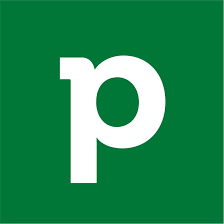Important Sales Terms for You To Remember


The sales industry has been around for centuries, from people bartering for goods, first exchanging money around 5000 BC, to the industrial revolution in the 1800s.
The first World Salesmanship Congress took place in 1916, and How to Win Friends and Influence People became the salesperson’s bible in 1936.
However, come the 1970s onwards, we saw a shift toward a more customer-centric approach, which has only increased with the advent of SaaS, CRM software, and sales automation.
Given how the sales industry continually evolves, any ambitious salesperson needs to stay on top of current sales terms. So we’ve created a quick A to Z guide on today’s most important sales-related terms.
We’ve split our list into a few categories:
- Basic sales terms
- Sales metrics
- Sales strategy
- Sales jobs
- Sales and the customer
- Sales software
- Sales funnel and pipeline
There’s lots to cover; let’s dive in!
Basic Sales Terms
Account
An account is a record of your business’s interactions with its customs, such as when customers buy a product or service or submit a contact form.
Account information includes browsing preferences, transactions, contact data, purchase history, etc.
Business-to-Business (B2B)
This describes sales between one business and another business – for example, a manufacturer and its supplier or distributor.

Business to Customer (B2C)
This describes sales between a business and individual customers or consumers. It can include selling goods such as groceries, homeware, clothing, etc.
Lead
A lead is an unqualified contact that’s interacted with your company in some guise or another.
Prospect
A prospect is a potential customer looking to buy and to whom a salesperson can reach out. A prospect is at the start of the sales pipeline (see below).
Sales Metrics
This is how an individual, team, or company’s sales performance is measured over a period of time. Specified data points measure sales metrics.
Annual Contract Value (ACV)
This is the average yearly revenue each customer generates. This term is often used when customers make repeated, regular purchases and can help determine expected annual revenue.
Annual Recurring Revenue (ARR)
SaaS and subscription services often use this crucial sales metric. It refers to the money a business anticipates earning from all its repeat customers over one year. This figure is helpful for long-term planning and future pricing strategies.
Churn Rate
This is the percentage of customers who cease buying from your business over time. It’s calculated by dividing the number of lost customers at the end of a given period by the total number of buyers at the start of that time frame.
Closing Ratio
This is how sales agents’ success is measured. It’s the number of closed sales deals compared against the number of sales prospects the salesperson engages with.
Conversion
Any sales prospect that moves to the next stage in the sales pipeline is called a conversion. A
conversion can mean a sale, a meeting, someone filling in a contact form on your website, etc.
Conversion Rate
The conversion rate measures the number of people who took your desired action divided by the total number of users.
Customer Acquisition Cost (CAC)
This is how much money a company spends on acquiring a new customer. This factors in expenses like sales rep pay and commission, work hours spent on acquiring that customer, and marketing expenses. Needless to say, for the customer to be worth their while, they need to spend more than the amount paid to attract them.
Customer Lifetime Value (CLV)
This calculation predicts how much money a customer will give your business over their lifetime.
This is how you work out a customer’s lifetime value:
Average purchase value x average purchase frequency rate = customer value x average customer lifespan = customer lifetime value.
Forecasting
Forecasting is when you predict future sales so that budgeting, product supply, and marketing decisions can be more effectively made. Factors such as past profits, supply chain status, sales rep metrics, and industry trends are considered when making accurate forecasts.

Key Performance Indicators (KPIs)
KPIs determine if a business or individual is meeting set goals. Typical KPIs include:
- Sales conversion rates.
- The number of cold calls a salesperson makes.
- The number of sales made.
- Annual growth.
…to name a few.
Lead Scoring
Lead scoring is the process of ranking sales leads according to their potential value to your business. Salespeople commonly use it to determine which leads are most likely to buy a product. Leads ranked at the top are those that actively need the product, would benefit from it and can afford to buy it.
Monthly Recurring Revenue (MRR)
The same as ARR but measured monthly. Again, it’s a metric almost entirely used by companies selling subscriptions.
Net Promoter Score® (NPS)
This is a means of measuring customer loyalty and satisfaction via a survey. Depending on the survey results, customers are ranked between 1-10 and fall into one of three categories:
- 9-10: Promoter (Happy customers who will buy from you again and recommend you to others)
- 6-8: Passive (Happy but won’t necessarily recommend your products)
- 1-6: Detractor (Unhappy customers who won’t promote your business)
Profit Margin
This measures a company’s gross profit relative to its revenue. It’s calculated as follows:
Gross profit (sales – all expenses) ÷ revenue for a given period x 100 = your % profit margin.
Quota
A quota is the number of sales that agents are expected to make over a set period (often monthly).
Sales Performance Management
This umbrella term describes the management of interrelated sales processes, incentives, quotas, lead delegation, analytics, and more.
Sales Pipeline Coverage
This ratio measures the complete sales pipeline vs the target sales quota over a given period. It offers sales reps a good overview of potential growth and quota possibilities. So, for example, if there aren’t enough sales leads, the quota won’t be achieved, and sales strategies will need adjusting accordingly.
Sales Strategy

ABC: Always Be Closing
A catchy reminder for sales agents to always try and close the deal.
Account-Based Selling
This is when the (short-term) business focus is converting a few high-value leads vs lots of lower-value ones.
BANT Framework (Budget, Authority, Need, Time)
Sales agents use the BANT Framework to determine if a lead should be nurtured. If a prospect ticks all four categories, they’re a priority.
Benefits
Product benefits are how the product solves a prospect’s problems/issues. This is what salespeople lean on to entice customers.
Cold Calling
This refers to making unsolicited calls to qualified leads in the hope of converting them into prospects. It’s a quick way of making personal connections to numerous leads.
Cross-Selling
Cross-selling is when you sell an additional product or service to a customer, increasing the value of a sale.
Direct Sales
Direct sales occur when no go-between is needed. I.e., products are sold directly from seller to consumer.
Discovery Call
This is the salesperson’s initial cold or scheduled conversation with a lead after they’ve asked for more information. Often, the customer’s pain point (see below) is determined in this call.
Feature
A characteristic(s) of a product that benefits the customer. For example, a CRM software’s key features are analytics, reporting, sales, and lead management.
Hard Sell
When a sales rep actively challenges a prospect’s objections. However, most companies now prefer a softer, more nurturing approach.
Objection
This is a concern expressed by a prospect during a sales conversion, such as price.
Pain Point
A pain point refers to a lead’s specific problem that a product from your company can potentially solve. Therefore, it’s imperative sales agents can identify your prospect’s pain points and sell to them accordingly.
Positioning Statement
Used by a sales rep to tell potential customers who they are and what they offer.
Prospecting
Identifying and contacting potential new prospects, leads, and customers via cold calling, advertising, networking, and so on.
Sales Enablement
Giving sales teams the tools, skills, resources, and training for success, including the best CRM software to target customers.
Sales Script
This is a pre-written guideline for sales reps to use when engaging with prospects. They can be used verbatim or as pointers. Needless to say, sales scripts need to be on-brand and consistent with your sales strategy.
Smarketing
This is when sales and marketing departments align to ensure effortless workflows.
Social Selling
Using social media to interact and nurture existing customers and prospects.
Soft Sell
A popular approach where sales agents take time to build trust with a prospect, working with them to find a solution to their specific pain point.
Upselling
Used to try to increase the value of a sale by encouraging a prospect to upgrade to an improved version of the product they initially expressed interest in.
Value Proposition
A breakdown of a product or service’s benefits. Depending on the prospect, sales agents may opt to emphasize certain benefits over others.
Sales Jobs
Account Executive
Manage current and prospective client accounts.

Account Development Representative
Create new sales strategies, identify potential clients and understand market trends.
Business Development Representative (BDR)
Focus on outbound leads, including individual sales and sales partnerships.
Field Sales Rep (B2B and B2C)
Field Sales Reps are frequently out of the office, travelling to potential and existing clients and negotiating in-person deals.
Inside Sales Rep
Office-based, primarily interacting with clients online or by phone.
Sales Coach
They provide coaching to help improve salespeople’s skills. Sometimes a sales coach is an in-house manager but can also be an external consultant.
Sales Development Representative (SDR)
Inbound sales reps whose job it is to convert inbound leads. They’re the primary contact between leads, prospects, clients, and the business. Some SDRs also deal with outbound leads.

Sales and The Customer
Bottom of the Funnel (BOFU)
Prospects are close to deciding to buy (or not).
Buyer Behavior
This is what your customers do as they move through the sales funnel. Of course, buyer behavior is influenced by many factors, including need, time, prices, economics, etc.
Buying Criteria
Customers need information before buying, including price and why one business’s products/services are better than their competitors.
Buying Signal
A signal that a customer is ready to buy. This may include requesting a product demo or free trial, signing a contract, or asking detailed questions about a contract.
Buying Intent
A customer’s buying intent refers to the likelihood of a prospective customer buying from you. Many businesses use analytics to deduce a prospect’s purchase intent.
Consumer
Someone who uses your products or services.
Decision-Maker
The person with the purchasing power to sign off on a sale.
Middle of the Funnel (MOFU)
A sales prospect in the middle of the sales funnels before parting with money. They have a relationship with the sales agent and are still finding out more about products and solutions.
Opportunity
An ‘opportunity’ is a sales prospect with a high chance of becoming a customer. This is also known as a sales-qualified lead (SQL).
Top of the Funnel (TOFU)
A sales prospect at the start of the sales funnel. This person may have contacted your business for the first time and is still at the discovery stage when they’re not sure what they’re looking for.
Sales Software
Ad-Hoc Reporting
A sales reporting tool that generates reports by request to display specified metrics such as sales conversion rates for specific agents.
Business Intelligence (BI)
When internal data such as KPIs are interpreted to make business decisions.
Cases or Tickets
Both are used to describe when customers request support from customer services post-purchase.
Customer Relationship Management (CRM) Systems
Time-saving sales software programs designed to connect with customers and track all aspects of sales and marketing. This includes sales metrics, customer profiles, automation, marketing tools, project management, and more. Having access to the best CRM sales tools is essential.
Cloud-Based CRM
Any CRM hosted in the Cloud. Such a system enables every user to access relevant data, irrespective of location.
CPQ Software (Configure Price Quote)
Time-saving sales automation software to help sales teams automate more accurate customer quotes and proposals for a better customer experience.
CRM Analytics
CRM data that’s analysed to employ better sales and marketing tactics.
Enterprise Resource Planning (ERP)
Software used to help manage a company’s financials, commerce, reporting, HR, manufacturing, supply chain, etc.
An ERP system is often combined with CRM software.
Infrastructure as a Service (IaaS)
IaaS is a cloud-based solution that provides online digital resources. Examples include backend functions such as Zapier and Amazon Web Services.
Knowledge Base
Online self-help information about a company. Internal knowledge bases are used by employees, while external ones are for customers. These often include FAQs and product usage information.
Lead Management
The process of generating, prioritising, qualifying, and tracking sales leads. This can be done using lead management software, which helps sales teams prioritise leads based on buyer intent.
On-Premise CRM
This is CRM software that’s hosted on a company’s own server. This type of CRM is typically used by businesses handling large amounts of sensitive data.
Opportunity Management
Opportunity management is the process of organising, delegating, and tracking all deals in a sales pipeline to increase the chances of a sale. Opportunity management is usually controlled by a sales manager using a CRM.
Platform as a Service PaaS
PaaS is software offered by a third party that provides all the software and hardware a company needs without needing to maintain its own infrastructure. A PaaS can also include lots of integrations/apps.
Single Sign On SSO
A safe system by which users can access multiple software systems using a single ID and password.
Software As A Service SaaS
SaaS is software licensed as a subscription and hosted centrally online. Sometimes it is called “on-demand software.”
Sales Dashboard
An on-screen visual picture of sales data in real-time. Sales teams typically use it to keep up to
speed on daily, weekly, and monthly sales metrics and goals.
Sales Funnel and Pipeline
Bad Leads
Leads that aren’t likely to buy and aren’t worth chasing.
Buyer Persona
A description(s) of the perfect customer(s). Buyer personas allow sales teams to tailor their sales tactics accordingly.

Buying Process
The three-step buyer journey from TOFU, MOFU, to BOFU (see above). Sales agents need to know which stage a buyer is at and which sales tactics to employ.
Closed Opportunities
When a buyer’s journey ends.
Closed-Won
A closed opportunity resulting in a sale.
Closed-Lost
A closed opportunity that doesn’t result in a sale but may need following up later.
Conversion Path
The path a potential customer follows to become a lead, such as responding to calls to action or signing up for a newsletter.
Demand Generation
Tactics employed by businesses to generate brand awareness and interest, including content creation and SEO (search engine optimisation).
Gatekeeper
This is someone preventing a sales agent from contacting a decision maker. For example, an assistant protecting their boss.
Lead Generation
Enticing people to become prospects. This is usually achieved via email marketing, optimised web content, or social media.
Lead Qualification
How a business assesses a lead to determine if it’s worth chasing.
Marketing-Qualified Lead MQL
A lead that engages with marketing materials but isn’t necessarily sales-qualified.
Pipeline Management
Any activities that involve managing sales teams and/or the sales pipeline, such as monitoring metrics, providing training, delegating tasks, etc.
Qualified Lead
A lead with a high chance of converting into a customer.
Sales Funnel
A sales funnel lets you visualize the different steps customers take throughout the sales process. Typically it consists of five steps: awareness, interest, evaluation, engagement, and purchase. Each stage should be tracked inside a CRM.
Sales Process
The ‘sales process’ is an overarching term that refers to the sales pipeline, sales funnel, and buyer journey.
Sales Pipeline
A ‘sales pipeline’ refers to each step a sales agent takes as they walk a prospect through the buying process. It runs parallel to the sales funnel.
Weighted Sales Pipeline
A sales pipeline that’s divided by the value of prospects – so a high-value prospect in the TOFU stage may be worth pursuing more than a low-value one in the MOFU stage.
Are You Ready to Start Using the Correct Sales Terminology?
These are just some of the many currently used sales terms and acronyms. We hope you find them helpful no matter where you’re at in your sales journey!



